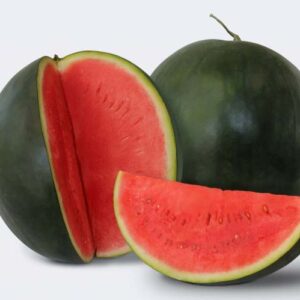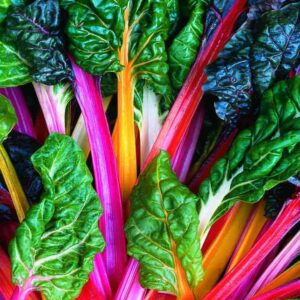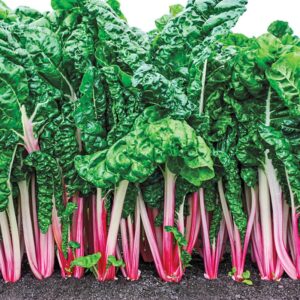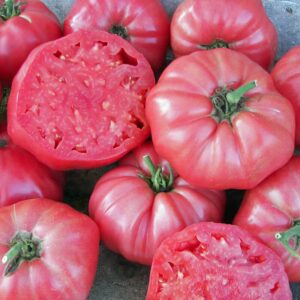Bush pickle variety of cucumber
Description of Bush pickle variety of cucumber.
The Bush Pickle cucumber variety is a compact, bushy plant that is well-suited for small gardens, containers, or even growing in hanging baskets. As its name suggests, it produces cucumbers that are perfect for pickling. The fruits are typically shorter and blockier compared to slicing cucumbers, making them ideal for fitting into jars. Bush Pickle cucumbers have a crisp texture and slightly bumpy skin, which allows them to absorb pickling brine and spices effectively. This variety is known for its productivity and can yield a plentiful harvest of pickling cucumbers in a relatively small space.
Planting instructions for bush pickle variety of cucumber
To plant Bush Pickle cucumbers, follow these planting instructions:
- Selecting a Location: Choose a sunny spot in your garden or a location with at least 6-8 hours of sunlight per day. Bush Pickle cucumbers can also be grown in containers or hanging baskets on a sunny patio or balcony.
- Soil Preparation: Prepare the soil by loosening it to a depth of at least 6 inches and incorporating organic matter such as compost or aged manure to improve fertility and drainage. Aim for a slightly acidic to neutral soil pH, ideally between 6.0 and 7.0.
- Planting Time: Wait until all danger of frost has passed before planting Bush Pickle cucumbers outdoors. In most regions, this is typically in late spring or early summer.
- Sowing Seeds or Transplanting Seedlings: You can either sow cucumber seeds directly into the ground or start seedlings indoors and transplant them outdoors once they have developed a few true leaves. If sowing directly, plant seeds about 1 inch deep and space them 6 to 12 inches apart. If transplanting seedlings, space them according to the recommended spacing on the seed packet.
- Watering: Keep the soil consistently moist but not waterlogged, especially during hot and dry periods. Water at the base of the plants to avoid wetting the foliage, which can lead to disease.
- Support: While Bush Pickle cucumbers are compact and bushy, providing support such as a small trellis or cage can help keep the fruit off the ground and reduce the risk of rot and pests. This is particularly important if you’re growing them in containers or hanging baskets.
- Fertilization: Apply a balanced fertilizer or compost once the plants start flowering and fruiting. Follow the instructions on the fertilizer package for application rates.
- Pest and Disease Management: Keep an eye out for common cucumber pests such as aphids, cucumber beetles, and powdery mildew. Implement pest control measures as needed, such as handpicking pests or using organic or chemical controls.
- Harvesting: Harvest Bush Pickle cucumbers when they are small and firm, typically around 2 to 4 inches in length. Regular harvesting encourages the plant to produce more fruit. Use sharp scissors or pruning shears to cut the cucumbers from the vine, taking care not to damage the plant.
Description of Bush pickle variety of cucumber.
The Bush Pickle cucumber variety is a compact, bushy plant that is well-suited for small gardens, containers, or even growing in hanging baskets. As its name suggests, it produces cucumbers that are perfect for pickling. The fruits are typically shorter and blockier compared to slicing cucumbers, making them ideal for fitting into jars. Bush Pickle cucumbers have a crisp texture and slightly bumpy skin, which allows them to absorb pickling brine and spices effectively. This variety is known for its productivity and can yield a plentiful harvest of pickling cucumbers in a relatively small space.
Planting instructions for bush pickle variety of cucumber
To plant Bush Pickle cucumbers, follow these planting instructions:
- Selecting a Location: Choose a sunny spot in your garden or a location with at least 6-8 hours of sunlight per day. Bush Pickle cucumbers can also be grown in containers or hanging baskets on a sunny patio or balcony.
- Soil Preparation: Prepare the soil by loosening it to a depth of at least 6 inches and incorporating organic matter such as compost or aged manure to improve fertility and drainage. Aim for a slightly acidic to neutral soil pH, ideally between 6.0 and 7.0.
- Planting Time: Wait until all danger of frost has passed before planting Bush Pickle cucumbers outdoors. In most regions, this is typically in late spring or early summer.
- Sowing Seeds or Transplanting Seedlings: You can either sow cucumber seeds directly into the ground or start seedlings indoors and transplant them outdoors once they have developed a few true leaves. If sowing directly, plant seeds about 1 inch deep and space them 6 to 12 inches apart. If transplanting seedlings, space them according to the recommended spacing on the seed packet.
- Watering: Keep the soil consistently moist but not waterlogged, especially during hot and dry periods. Water at the base of the plants to avoid wetting the foliage, which can lead to disease.
- Support: While Bush Pickle cucumbers are compact and bushy, providing support such as a small trellis or cage can help keep the fruit off the ground and reduce the risk of rot and pests. This is particularly important if you’re growing them in containers or hanging baskets.
- Fertilization: Apply a balanced fertilizer or compost once the plants start flowering and fruiting. Follow the instructions on the fertilizer package for application rates.
- Pest and Disease Management: Keep an eye out for common cucumber pests such as aphids, cucumber beetles, and powdery mildew. Implement pest control measures as needed, such as handpicking pests or using organic or chemical controls.
- Harvesting: Harvest Bush Pickle cucumbers when they are small and firm, typically around 2 to 4 inches in length. Regular harvesting encourages the plant to produce more fruit. Use sharp scissors or pruning shears to cut the cucumbers from the vine, taking care not to damage the plant.





